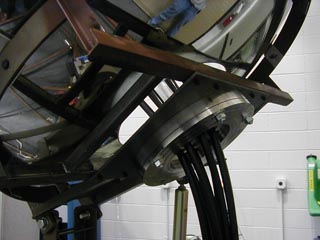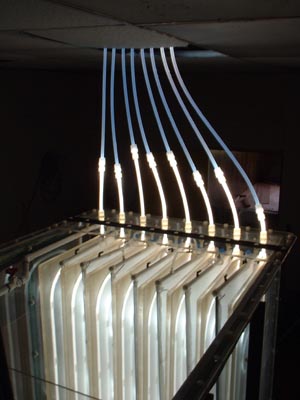
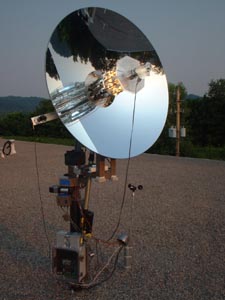
This Cassegrain parabolic dish concentrator energizes eight 1/2" diameter fiber-optic strands to 11000 lumens each. The fiber is then routed through the ceiling (roof) of the building and terminates on the Bio-Reactor plates shown below.
This prototype was designed at Oak Ridge National Laboratories in Tennessee and is installed on the roof of a lab at Ohio University for a joint test of the fiber-optic lighting and the reactor.
The ultimate use for the system will be for room daylighting where the fiber is combined with special florescent lights that can operate on a computerized dimmer.
When
depending on the natural sunlight for reading or any circumstance where
one expects unwavering light, it is disconcerting to have the light
in the room go out every time a cloud moves in front of the Sun. In
this system, a computer monitors the natural light level and 'brings
up' the florescent light as the natural illumination fades; lowering
it when the Sun again becomes visible.

Hybrid Daylighting Concentrator Systems
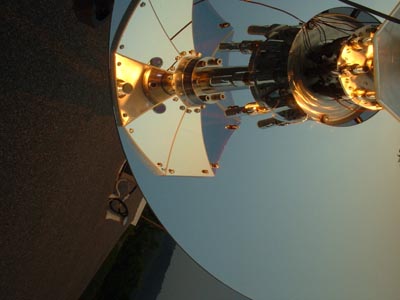
Seen in a double reflection
are three of the eight fiber receivers. A 3/8" spot of about 1150 suns
is focused on the end of a piece of quartz rod after passing through a spectral
filter where it begins its travels to become 'the light at the end of the
tunnel'. The segmented secondary reflector (seen as a reflection in the
primary dish) consists of eight trapezoid mirrors that takes the partially
focused light from the primary reflector and finishes it down to 3/8"
while reversing the beam backwards so the fiber can exit the back of the
array.
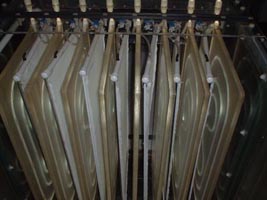
The fibers exit separately
through the back of the dish and are then brought together and directed
down the center of the mounting post, into the ceiling and down to the eight
reactor illumination plates.
